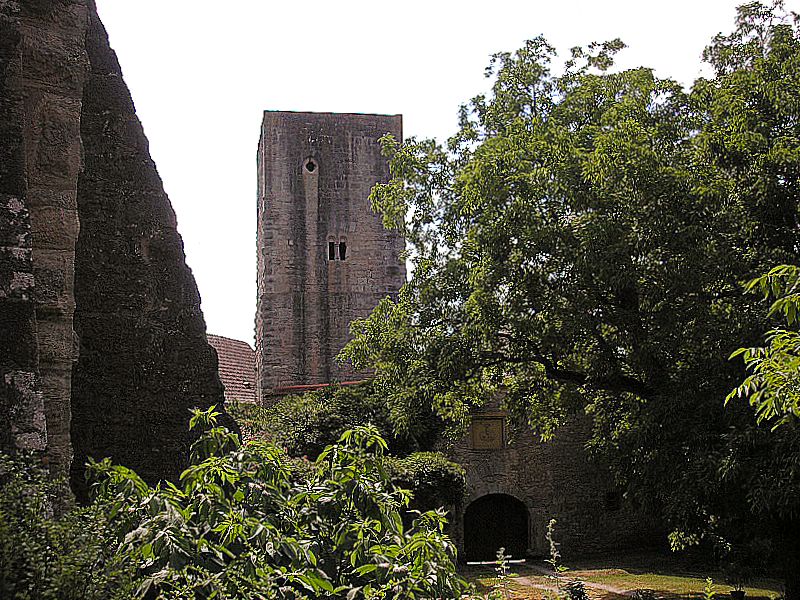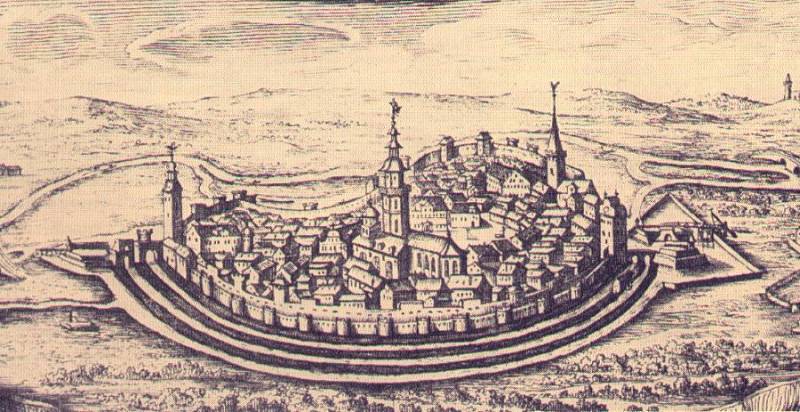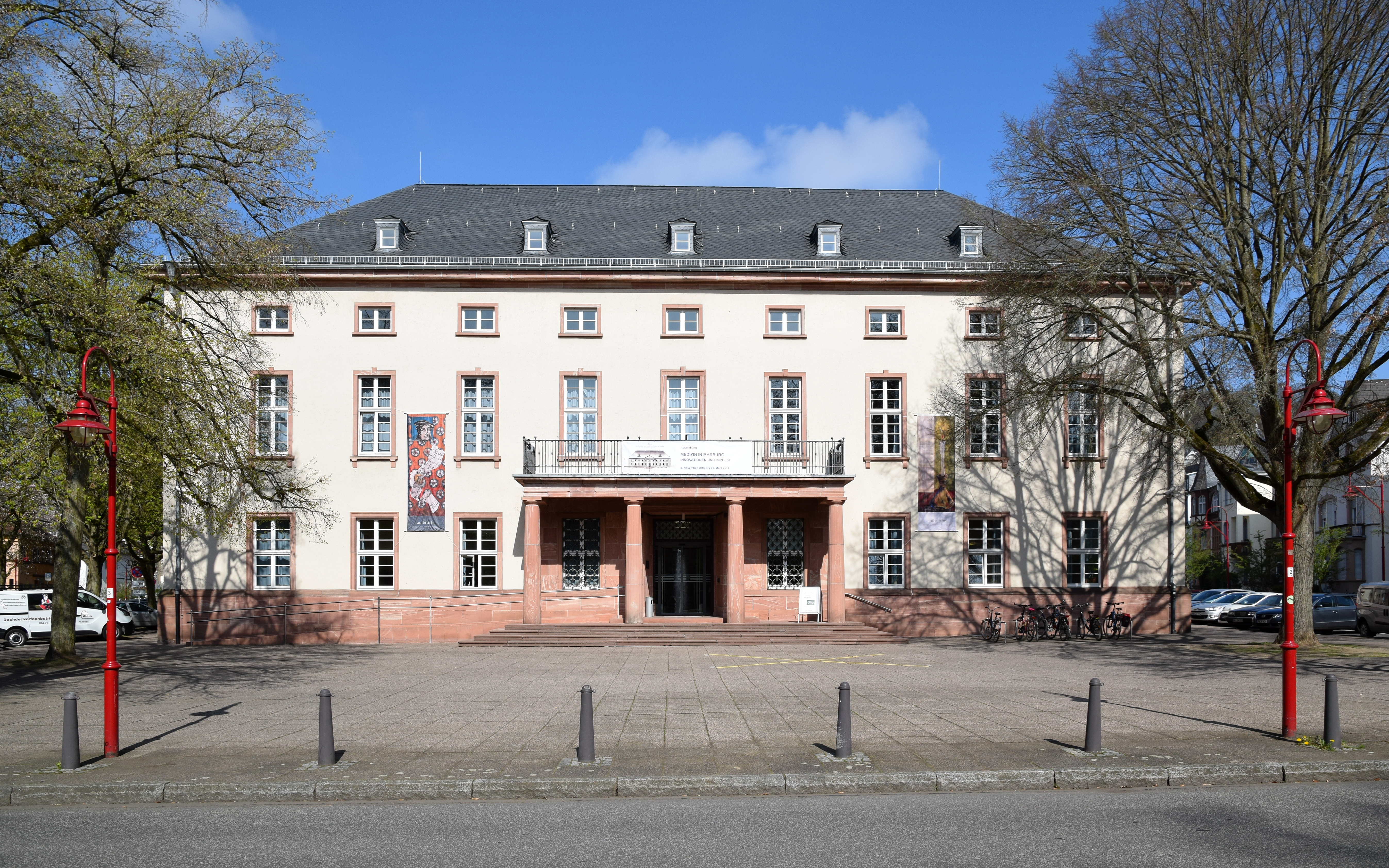|
Salzburg Castle
Salzburg Castle (german: Burg Salzburg) stands on the edge of a plateau above the town of Bad Neustadt an der Saale in Lower Franconia in southern Germany. The large ''Ganerbenburg'' (jointly inherited castle) is still partly occupied today and not all areas are accessible to the public. Location The castle was built about a kilometre east of Bad Neustadt on the western end of the plateau above Neuhaus and is separated from the land in front of it by a roughly 160-metre-long neck ditch. Until the 19th century the whole hillside was cleared and was used as early as the High Middle Ages for viticulture. The present, thickly wooded ridge on which the castle stands is also the site of the extensive Franconian Clinic ( Rhön-Klinikum AG), which dominates the landscape. History Early Middle Ages By the Carolingian era, the Salzgau around Neustadt was already very important. An imperial palace (''Pfalz'') was even built here; it was given to the Bishopric of Wurzburg in 10 ... [...More Info...] [...Related Items...] OR: [Wikipedia] [Google] [Baidu] |
Hill Castle
A hill castle or mountain castle is a castle built on a natural feature that stands above the surrounding terrain. It is a term derived from the German ''Höhenburg'' used in categorising castle sites by their topographical location. Hill castles are thus distinguished from lowland castles (''Niederungsburgen''). Hill castles may be further subdivided depending on their situation into the following: * Hilltop castle (''Gipfelburg''), that stands on the summit of a hill with steep drops on all sides. A special type is the rock castle or ''Felsenburg''. * Ridge castle (''Kammburg''), that is built on the crest of a ridge. * Hillside castle (''Hangburg''), that is built on the side of a hill and thus is dominated by rising ground on one side. * Spur castle (''Spornburg''), that is built on a hill spur surrounded by steep terrain on three sides and thus only needs to be defended on the one remaining side. When in the 10th and 11th centuries castles lost their pure fortress charact ... [...More Info...] [...Related Items...] OR: [Wikipedia] [Google] [Baidu] |
Hungarian Invasions
The Hungarian invasions of Europe ( hu, kalandozások, german: Ungarneinfälle) took place in the 9th and 10th centuries, the period of transition in the history of Europe in the Early Middle Ages, when the territory of the former Carolingian Empire was threatened by invasion from multiple hostile forces, the Magyars (Hungarians) from the east, the Viking expansion from the north and the Arabs from the south.Barbara H. Rosenwein, A short history of the Middle Ages, University of Toronto Press, 2009, p. 15/ref> The Magyars successfully Hungarian conquest of the Carpathian Basin, conquered the Carpathian Basin (corresponding to the later Kingdom of Hungary) by the end of the ninth century, and launched a number of plundering raids both westward into former Francia and southward into the Byzantine Empire. The westward raids were stopped only with the Magyar defeat of the Battle of Lechfeld of 955, which led to a new political order in Western Europe centered on the Holy Roman Em ... [...More Info...] [...Related Items...] OR: [Wikipedia] [Google] [Baidu] |
Meiningen
Meiningen () is a town in the southern part of the state of Thuringia, Germany. It is located in the region of Franconia and has a population of around 25,000 (2021)." target="_blank" class="mw-redirect" title="City of Meiningen, citizen service">City of Meiningen, citizen service Jahresrückblick 2021 (year review), PDF (4,4 MB). Meiningen is the capital and the largest town of the Schmalkalden-Meiningen district. From 1680 to 1920, Meiningen was the capital of the Duchy (and briefly of the Free State) of Saxe-Meiningen. Meiningen is considered the cultural, judicial and financial centre of southern Thuringia and thus hosts the state theatre, justice center, state archives, bank buildings and many museums. It is economically reliant on mechanical engineering, high-tech industry and tourism. The dialect ... [...More Info...] [...Related Items...] OR: [Wikipedia] [Google] [Baidu] |
Mellrichstadt
Mellrichstadt is a town in the district Rhön-Grabfeld, in Bavaria, Germany. It is situated 17 km southwest of Meiningen, and 13 km northeast of Bad Neustadt Bad Neustadt an der Saale, officially Bad Neustadt a. d. Saale and often simply called Bad Neustadt, is a town in northern Bavaria, Germany. It is the capital of the Rhön-Grabfeld district in Lower Franconia. It is situated on the rivers Fränki .... It includes the following villages: Bahra, Eußenhausen, Frickenhausen, Mühlfeld, Sondheim im Grabfeld und Roßrieth. Literature Features in John Douglas-Gray's thriller 'The Novak Legacy' References Rhön-Grabfeld {{RhönGrabfeld-geo-stub ... [...More Info...] [...Related Items...] OR: [Wikipedia] [Google] [Baidu] |
Gebhard Von Henneberg
Gebhard (''Gebhart'') is a German given name, recorded at least from the 9th century. It is composed of the Old High German elements ''geb'' "gift" and ''hard'' "brave, hardy". People with the surname *Heinrich Gebhard (1878-1963), pianist, composer and teacher *Fran Gebhard, Canadian theatre director and actor *Renate Gebhard (born 1977), Italian jurist and politician *Rollo Gebhard (1921–2013), German sailor and writer Given and/or ceremonial names *Gebhard, Duke of Lorraine (888–910), Frankish noble *Gebhard of Constance (949–995), Austrian bishop and saint *Gebhard I (Bishop of Regensburg) (died 1023) *Gebhard II (Bishop of Regensburg) (died 1036) * Gebhard III (Bishop of Regensburg) (died 1060) *Gebhard of Salzburg Blessed Gebhard von Salzburg ( 101015 June 1088), also occasionally known as Gebhard of Sussex, was Archbishop of Salzburg from 1060 until his death. He was one of the fiercest opponents of King Henry IV of Germany during the Investiture Controver ... [...More Info...] [...Related Items...] OR: [Wikipedia] [Google] [Baidu] |
Limestone
Limestone ( calcium carbonate ) is a type of carbonate sedimentary rock which is the main source of the material lime. It is composed mostly of the minerals calcite and aragonite, which are different crystal forms of . Limestone forms when these minerals precipitate out of water containing dissolved calcium. This can take place through both biological and nonbiological processes, though biological processes, such as the accumulation of corals and shells in the sea, have likely been more important for the last 540 million years. Limestone often contains fossils which provide scientists with information on ancient environments and on the evolution of life. About 20% to 25% of sedimentary rock is carbonate rock, and most of this is limestone. The remaining carbonate rock is mostly dolomite, a closely related rock, which contains a high percentage of the mineral dolomite, . ''Magnesian limestone'' is an obsolete and poorly-defined term used variously for dolomite, for limes ... [...More Info...] [...Related Items...] OR: [Wikipedia] [Google] [Baidu] |
Palisade
A palisade, sometimes called a stakewall or a paling, is typically a fence or defensive wall made from iron or wooden stakes, or tree trunks, and used as a defensive structure or enclosure. Palisades can form a stockade. Etymology ''Palisade'' derives from ''pale'', from the Latin word ', meaning stake, specifically when used side by side to create a wood defensive wall. Typical construction Typical construction consisted of small or mid-sized tree trunks aligned vertically, with as little free space in between as possible. The trunks were sharpened or pointed at the top, and were driven into the ground and sometimes reinforced with additional construction. The height of a palisade ranged from around a metre to as high as 3–4 m. As a defensive structure, palisades were often used in conjunction with earthworks. Palisades were an excellent option for small forts or other hastily constructed fortifications. Since they were made of wood, they could often be quickly and easil ... [...More Info...] [...Related Items...] OR: [Wikipedia] [Google] [Baidu] |
Burg Salzburg 14
The German word Burg means castle. Burg or Bürg may refer to: Places Placename element * ''-burg'', a combining form in Dutch, German and English placenames * Burg, a variant of burh, the fortified towns of Saxon England Settlements * Burg, Aargau, Switzerland * Burg, Bernkastel-Wittlich, Germany * Burg, Bitburg-Prüm, Germany * Burg, Brandenburg, Germany * Burg, Dithmarschen, Germany * Burg auf Fehmarn, Germany * Burg bei Magdeburg, Germany * Burg im Leimental, Switzerland * Den Burg, Netherlands * The Burg, Illinois, United States * Burg, Hautes-Pyrénées, France * Burg, Kilninian and Kilmore, a place on the Isle of Mull, Argyll and Bute, Scotland * Melber, Kentucky, United States, also known as Burg Other uses * Burg (surname) or Bürg * Bürg (crater) * Burg (ship, 2003), a car ferry operating on Switzerland's Lake Zurich *Burgs (fast-food chain) See also * * Burgh (other) * Borg (other) * Bourg (other) * Borough and -bury, common Engli ... [...More Info...] [...Related Items...] OR: [Wikipedia] [Google] [Baidu] |
Early Medieval
The Early Middle Ages (or early medieval period), sometimes controversially referred to as the Dark Ages, is typically regarded by historians as lasting from the late 5th or early 6th century to the 10th century. They marked the start of the Middle Ages of European history, following the decline of the Western Roman Empire, and preceding the High Middle Ages ( 11th to 13th centuries). The alternative term ''late antiquity'', for the early part of the period, emphasizes elements of continuity with the Roman Empire, while ''Early Middle Ages'' is used to emphasize developments characteristic of the earlier medieval period. The period saw a continuation of trends evident since late classical antiquity, including population decline, especially in urban centres, a decline of trade, a small rise in average temperatures in the North Atlantic region and increased migration. In the 19th century the Early Middle Ages were often labelled the ''Dark Ages'', a characterization based on t ... [...More Info...] [...Related Items...] OR: [Wikipedia] [Google] [Baidu] |
Hessisches Staatsarchiv Marburg
The Hessisches Staatsarchiv Marburg (HStAM, "Hessian State Archives in Marburg") is one of the three archives of the Hessisches Landesarchiv and is based in Marburg Marburg ( or ) is a university town in the German federal state (''Bundesland'') of Hesse, capital of the Marburg-Biedenkopf district (''Landkreis''). The town area spreads along the valley of the river Lahn and has a population of approxima ... upon Lahn. References Marburg Hessian StateArchives Marburg Marburg Hessian StateArchives {{Germany-stub ... [...More Info...] [...Related Items...] OR: [Wikipedia] [Google] [Baidu] |
Fulda Abbey
The Abbey of Fulda (German ''Kloster Fulda'', Latin ''Abbatia Fuldensis''), from 1221 the Princely Abbey of Fulda (''Fürstabtei Fulda'') and from 1752 the Prince-Bishopric of Fulda (''Fürstbistum Fulda''), was a Order of Saint Benedict, Benedictine abbey and Hochstift, ecclesiastical principality centered on Fulda, in the present-day German state of Hesse. The monastery was founded in 744 by Saint Sturm, a disciple of Saint Boniface. After Boniface was buried at Fulda, it became a prominent center of learning and culture in Germany, and a site of religious significance and pilgrimage through the 8th and 9th centuries. The ''Annals of Fulda'', one of the most important sources for the history of the Carolingian Empire in the 9th century, were written there. In 1221 the abbey was granted an imperial estate to rule and the abbots were thereafter princes of the Holy Roman Empire. In 1356, Emperor Charles IV bestowed the title "Archchancellor of the Empress" (''Erzkanzler der Kaiserin' ... [...More Info...] [...Related Items...] OR: [Wikipedia] [Google] [Baidu] |






